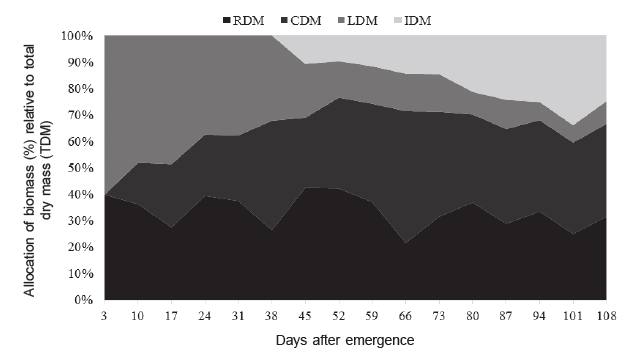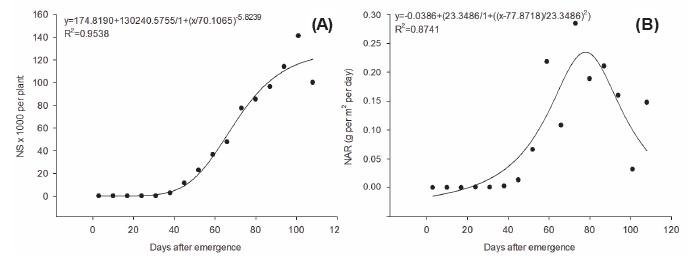ABSTRACT
E. indica is one of the most problematic weeds in the world because it is present in almost every continent, and there are reports of multiple resistance to herbicides by some biotypes. The objective of this paper was to analyze the growth, the development and the production of this plant's seeds, in order to generate information about its biology that can be useful for management. The experiment was carried out in a greenhouse from May to September 2015. Sixteen samples were taken during the development cycle of the plant: 3, 10, 17, 24, 31, 38, 45, 52, 59, 66, 73, 80, 87, 94, 101 and 108 days after emergence (DAE). The response variables were based on a leaf area and dry matter of each one of the parts of the plant and the number of seeds produced per plant. At 12 DAE, 80% of the seedlings of E. indica had emerged, and each plant produced more than 120 thousand seeds, closing their cycle at 120 DAE. Between 38 and 43 DAE, the plant had fast emission of new tillers, exponential accumulation of the total dry matter and substantial increase of the absolute growth rate. Due to the data observed here, we concluded that the management of E. indica must be done preferably before 38 DAE due to the exponential growth after this period, preventing the plant from producing seeds and spreading to other places.
Keywords:
Eleusine indica; relative growth; biomass allocation; weed biology








